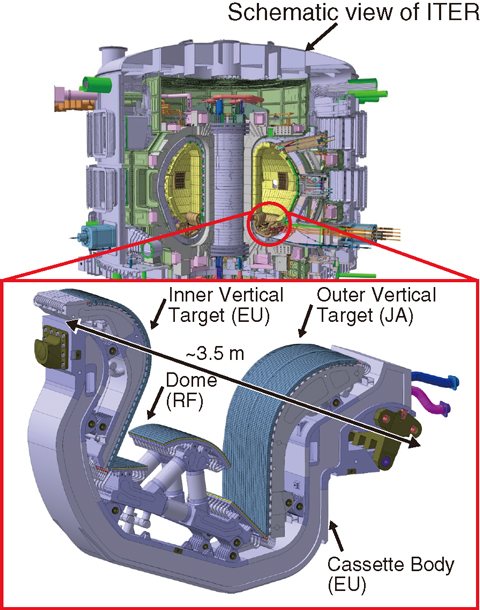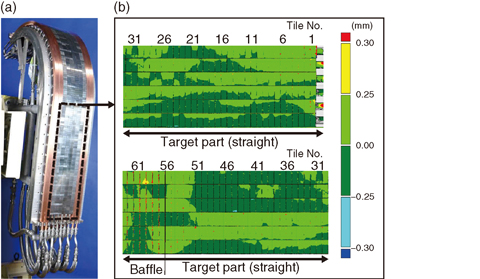
Fig.9-5 Appearance of the ITER divertor (Cassette structure)

Fig.9-6 Appearance of full-tungsten full-scale prototype plasma-facing units and a result of 3D geometrical measurement
JAEA, as the Japan Domestic Agency (JADA), is currently manufacturing various components for the ITER project. The ITER divertor, as shown in Fig.9-5, is intended to neutralize incident impurities and exhaust them from the plasma. These divertor components are provided by three parties (Japan, European Union, and Russian Federation). JADA is going to manufacture one of the high-heat flux components, the so-called “outer vertical targets”.
The plasma-facing units (PFUs) of the ITER divertor are subjected to high-heat flux from plasma. Carbon-fiber-reinforced carbon composite (CFC) materials have been selected as one of the armor materials for the PFUs in the non-nuclear operation phase of the ITER. In 2013, all-tungsten armored PFUs were adopted so as to utilize PFUs in both non-nuclear and nuclear (DD and DT) operational phases, since tungsten is expected to retain less tritium than CFCs. The tungsten armor tiles are metallurgically bonded onto cooling tubes made of copper alloy (CuCrZr) to achieve an adequate heat removal capability. In addition, the geometrical tolerance of the plasma-facing surface of the PFUs is tight enough to avoid the melting of tungsten armor tiles by incident heat flux upon their leading edges. JADA has selected braze technology as a candidate for bonding the tungsten armor tiles to the cooling tubes. High-heat flux tests of prototype PFUs are mandatory for demonstrating the thermal performance and durability of the PFUs and for qualifying the candidate bonding technology in the ITER project. As a first step, JADA has developed full-tungsten, full-scale prototype PFUs, as shown in Fig.9-6(a). Several non-destructive inspections upon the brazed or welded parts of the prototype PFUs have been performed prior to high-heat flux testing. Fig.9-6(b) shows the result of a 3D geometrical measurement on the plasma-facing surface of the prototype PFUs. The target part (straight part), which is subjected to the highest heat flux (∼20 MW/m2) among the divertor components of all prototype PFUs satisfied the required stringent tolerance of ±0.3 mm. Thus, JADA achieved one of the key milestones toward the realization of the ITER divertor.
High-heat flux testing of the prototype PFUs is to be conducted at the ITER Divertor Test Facility (IDTF) by the Russian domestic agency in 2016.